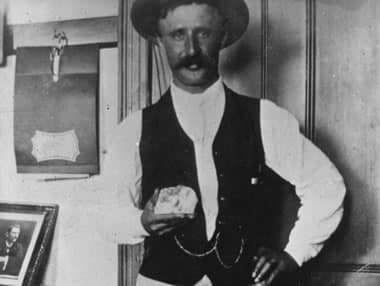As Britain prepares for the coronation of King Charles III on Saturday, some South Africans are calling for the return of a huge diamond that is set in the royal sceptre and was taken from their country more than a century ago.
The diamond, known as the Star of Africa or Cullinan I, is the largest clear-cut diamond in the world, weighing 530 carats (106 grams). It was discovered in South Africa in 1905 and presented to King Edward VII in 1907 by the colonial government of Transvaal, which was then under British rule.

The Star of Africa is one of nine stones that were cut from the original Cullinan diamond, which weighed 3,106 carats (621 grams) and was the largest gem-quality rough diamond ever found. The other eight stones are also part of the British crown jewels or belong to Queen Elizabeth II.
Some South Africans have launched an online petition, which has gathered about 8,000 signatures, to demand that the Star of Africa be returned to its rightful owners. They argue that the diamond was stolen from them during colonial times and that it should be a symbol of their pride, heritage and culture.
“The British monarchy must play its part in breaking this colonial relationship by acknowledging the role that it played,” said Everisto Benyera, associate professor of African Politics at the University of South Africa in Pretoria. “And one of the biggest ways that it can acknowledge is to stop using our diamonds on their regalia, is to stop using our resources during their ceremonies.”

The British government has not responded to the petition, but it has previously rejected similar requests to return artefacts and artworks that were taken from former colonies. It maintains that the crown jewels are part of Britain’s national heritage and that they are better preserved and displayed in British museums and institutions.
The Star of Africa will be seen by millions of people around the world on Saturday, when it will be held by King Charles III at his coronation. The diamond is mounted in the head of the Sovereign’s Sceptre with Cross, which is one of the most important symbols of royal authority. The sceptre was redesigned in 1910 to accommodate the Star of Africa.
The Star of Africa is also known as Cullinan I because it was cut from the Cullinan diamond, which was named after Thomas Cullinan, who owned the mine where it was found. The Cullinan diamond was mined near Pretoria on January 26, 1905. It was so large and exceptional that it was initially mistaken for a piece of glass.
The Cullinan diamond was put on sale in London in April 1905, but it did not attract any buyers for two years. In 1907, the Transvaal government decided to buy it for £150,000 and present it to King Edward VII as a gesture of loyalty and goodwill. The king accepted the gift and entrusted it to a Dutch jeweller named Joseph Asscher to cut it into smaller stones.
Asscher spent several months studying the diamond before he made his first cut on February 10, 1908. He fainted after he successfully split the diamond into two pieces. He then cut nine major stones and 96 smaller ones from the original Cullinan diamond. The largest stone was named Cullinan I or Star of Africa and given to King Edward VII. The second-largest stone was named Cullinan II or Second Star of Africa and set in the Imperial State Crown.
The Star of Africa has been held by every British monarch since King Edward VII. It has been used at coronations, jubilees and state openings of parliament. It has also been displayed at various exhibitions around the world, including South Africa in 1994. It is estimated to be worth more than $400 million today.
Source: The Independent Ghana
